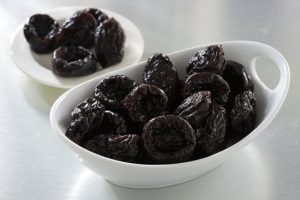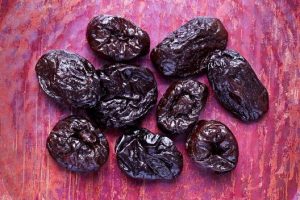 Right or wrong, excess sugar intakes are being frowned upon by health experts, due to the association of high ‘free’ sugars with poor dietary quality, obesity and increased risk of non-communicable diseases – heart disease, cancers, diabetes, asthma and dental diseases being the most prevalent globally!
Right or wrong, excess sugar intakes are being frowned upon by health experts, due to the association of high ‘free’ sugars with poor dietary quality, obesity and increased risk of non-communicable diseases – heart disease, cancers, diabetes, asthma and dental diseases being the most prevalent globally!
Free sugars include monosaccharides and disaccharides added to foods and beverages by the manufacturer, cook or consumer, and sugars naturally present in honey, syrups, fruit juices and fruit juice concentrates. So it should be safe to assume that traditional dried fruits are excluded from current public health campaigns, designed to meet WHO recommendations for reducing sugar to less than 10% of daily energy intakes – or is it?
Emphasis is on reducing sugar-sweetened beverages and the sugar contributed by fruit juices and smoothies , because of the large volumes of these energy-rich drinks consumed, to simply quench thirst! As well as reducing sugars, the protective role of dietary fibre for reducing risks to health are well recognised. In fact the UK’s Scientific Advisory Committee on Nutrition recommends reducing sugars to less than 5% energy as well as increasing fibre from 25g to 30g/day. For a majority of consumers this will be difficult to achieve, which is where traditional dried fruits could be promoted as playing a useful role in a healthy diet, providing varying amounts of dietary fibre in a natural, sweet tasting format.
 So dried fruit should be being recommended by health professionals as part of the solution- right? It seems not, for a number of reasons:
So dried fruit should be being recommended by health professionals as part of the solution- right? It seems not, for a number of reasons:
Firstly the popularity of processed fruit snacks, with varying quantities of fruit pieces, fruit juice concentrate and other forms of added sugar (e.g. glucose syrup in yoghurt coatings), is unfortunately blurring the boundaries between confectionary at one extreme (almost 100% sugar) and traditional dried fruits (that have no added sugar) at the other. Processed fruit snacks have been promoted as healthy, some boasting that they can contribute to one of the 5-a-day and convenient for children’s lunch boxes, with consumers not until now questioning this perception.
A UK survey in 2015 of children’s healthy fruit snacks revealed that 85% contained more sugar than Haribo (more than 4tsp sugar per serving). Such reports have contributed to the industry taking a good hard look at the role of fruit and sugar for healthy convenience, but there’s a long way to go since it seems consumers and health professionals alike do not automatically distinguish between fruits with added sugar and those that are 100% pure fruit! As added sugar takes on a new negative connotation, we need to guard against traditional dried fruits being subsumed within the same unhealthy sweetie bag!
 Secondly dried fruits are included on lists of foods to limit to mealtimes due to their potential detrimental effect on teeth. The UK’s NHS website includes the following statement – ‘A 30g portion of dried fruit, such as currants, dates, sultanas and figs, counts as one of your 5 A DAY, but should be eaten at mealtimes, not as a between-meal snack, to reduce the impact on teeth.’
Secondly dried fruits are included on lists of foods to limit to mealtimes due to their potential detrimental effect on teeth. The UK’s NHS website includes the following statement – ‘A 30g portion of dried fruit, such as currants, dates, sultanas and figs, counts as one of your 5 A DAY, but should be eaten at mealtimes, not as a between-meal snack, to reduce the impact on teeth.’
This is a potentially serious case of urban myth, with supposition being perpetuated down the years, unchecked and finding itself included as fact within new health advice! The California Prune Board have taken this matter seriously and commissioned a review of the research literature to find the source of the negative dental health advice associated with dried fruit. Oral health is a complex issue, and preliminary findings highlight a lack of consistent data such that more research is needed to ensure evidence-based practice.
Old research centred around dried fruit sticking to the teeth, but improved research methods challenge these assumptions. Prunes can provide some potential benefits for dental health, such as the encouragement of salivary flow through chewing; anti-microbial properties due to their high polyphenol content; the cleansing action from fibre; and a low fermentability due to prunes high sorbitol and low sucrose content.
 Traditional dried fruit is simply the fresh fruit with water removed, so whole dried fruit should be a convenient alternative to fresh. Unfortunately even key opinion formers are not clear about the relative sugar content of dried fruit, so at best they may be viewed as a better option than confectionary, but this is a long way from their fresh fruit siblings! So it’s been a natural move to adopt the dental health advice and recommend limiting consumption of dried fruit to mealtimes. This advice undermines their potential role as a healthy snack alternative to current typical snacks that can be high in sugar, fat and salt!
Traditional dried fruit is simply the fresh fruit with water removed, so whole dried fruit should be a convenient alternative to fresh. Unfortunately even key opinion formers are not clear about the relative sugar content of dried fruit, so at best they may be viewed as a better option than confectionary, but this is a long way from their fresh fruit siblings! So it’s been a natural move to adopt the dental health advice and recommend limiting consumption of dried fruit to mealtimes. This advice undermines their potential role as a healthy snack alternative to current typical snacks that can be high in sugar, fat and salt!
None of this is new to the dried fruit industry, indeed an excellent report was published in 2011 summarising the view of a group of scientists that traditional dried fruits could and should be considered alongside fresh and so contribute towards achieving the increased fruit and vegetable intakes so necessary for improved health outcomes.
As an industry we need to do more to disentangle traditional dried fruit from processed fruit products; correct the misinformation with accurate communications and high quality research; and reposition traditional dried fruit as a healthy snack choice- where it’s always been in many parts of the world, such as the Eastern Mediterranean and Middle East! Traditional dried fruits have an opportunity to contribute to improving consumer’s snacking habits, if encouraged to do so!
Article by Jennette Higgs, Consultant Dietitian, California Prune Board.
 About Jennette:
About Jennette:
Jennette is a Registered Dietitian, consultant public health nutritionist and sports dietitian with over 30yrs experience of working in the food industry, hospitals and the community, in clinical, advisory and management roles.
Industry roles include 5yrs with Nutricia BV and 8yrs with the British Meat and Livestock Commission as Nutrition and Dietetics Manager. Her nutrition consultancy, Food To Fit Ltd (est 2000) works with food industry clients on strategic, marketing and PR issues, with a specific focus on the implications of the European Nutrition and Health Claims Regulations. Food To Fit Ltd provides advice and support on nutrition and health matters to international clients mainly in the nut, dried fruit and fresh fruit & vegetable industries, including the California Prune Board, Sunsweet, American Peanut Council, the World Apple & Pear Association (WAPA), Europotat, American Pistachio Association, Humdinger, SunMaid, Almond Board of California, Coconut Water.
Over the years she has written numerous articles for health professional, academic and consumer media, on varied nutrition topics and regularly devised slimming diets for Women’s magazines. Jennette was for 20yrs Project Director and Trustee for the Health Education Trust, a charity dedicated to initiating and supporting work with young people and schools to encourage the growth of healthy lifestyles. She still works with HET on schools allergy awareness projects.

You must be logged in to post a comment Login